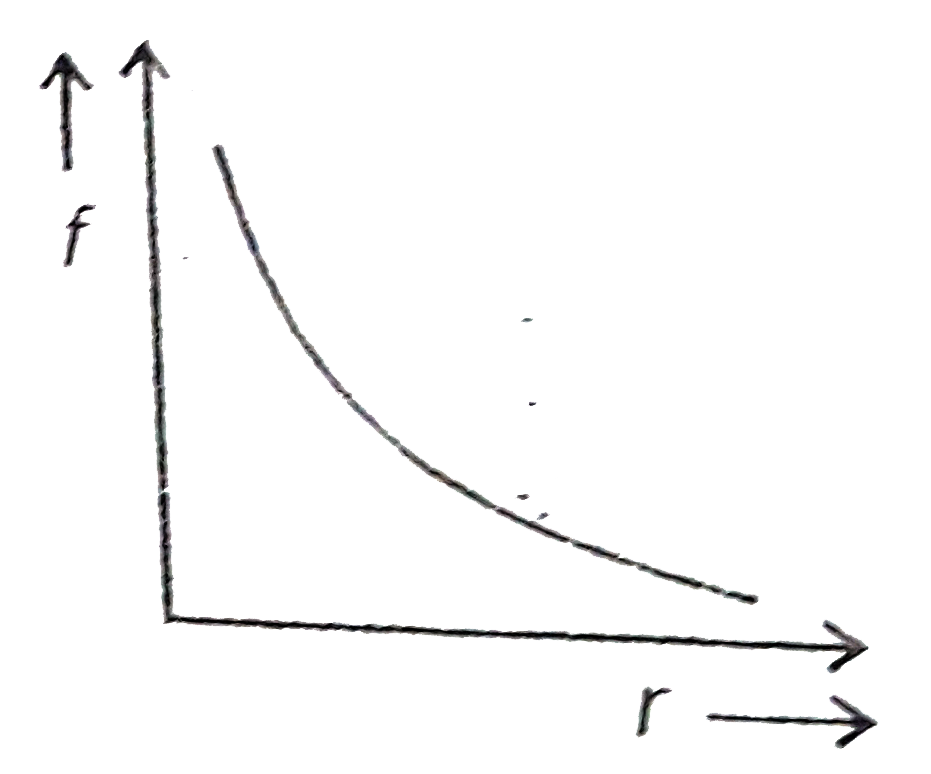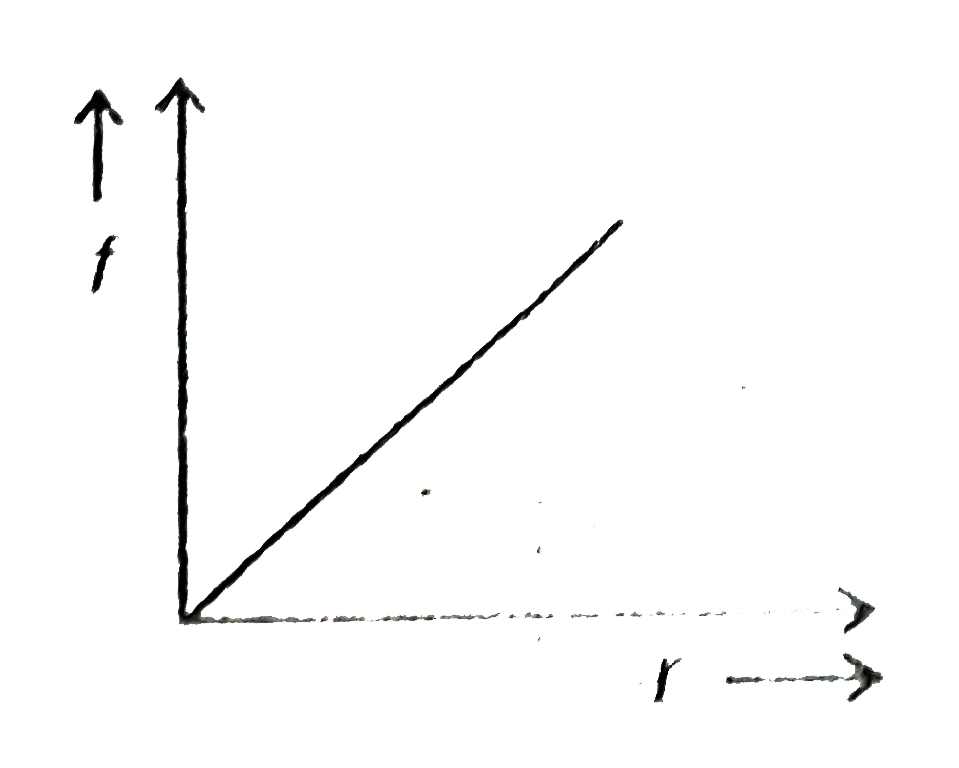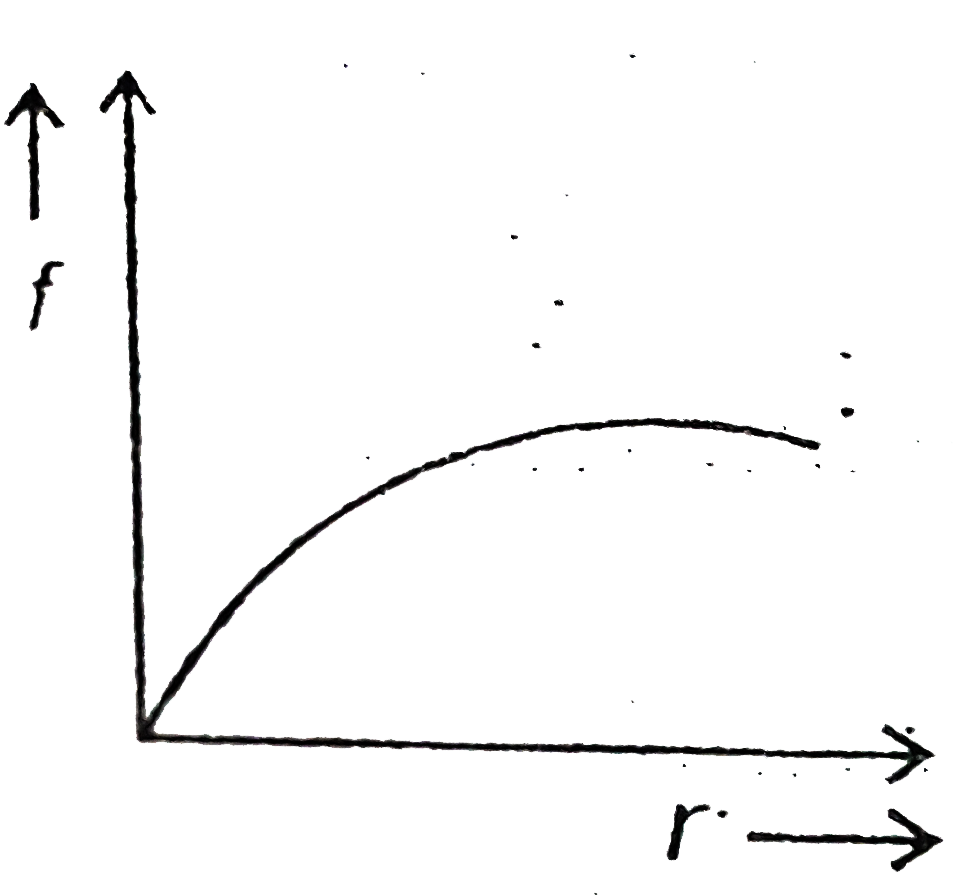Which of the followings represent the variation of frequency (f) with radius of cross section of a stretched string?



none of these
The correct Answer is:A
To solve the problem of how frequency (f) varies with the radius (r) of the cross-section of a stretched string, we can follow these steps:
Step 1: Understand the formula for frequency of a stretched string
The frequency (f) of a stretched string can be expressed using the formula:
f=12L√Tμ
where:
- T is the tension in the string,
- μ is the mass per unit length,
- L is the length of the string.
Step 2: Relate mass per unit length to the radius
The mass per unit length (μ) can be expressed in terms of the density (ρ) and the cross-sectional area (A) of the string:
μ=mL=ρ⋅AL
For a circular cross-section, the area (A) can be expressed as:
A=πr2
Thus, we can write:
μ=ρ⋅πr2⋅LL=ρ⋅πr2
Step 3: Substitute μ back into the frequency formula
Substituting μ into the frequency formula gives:
f=12L√Tρ⋅πr2
Step 4: Simplify the expression
This can be simplified to:
f=12L⋅√Tρ⋅π⋅1r
Here, 12L⋅√Tρ⋅π is a constant (let's call it k):
f=kr
Step 5: Conclude the relationship
From the equation f=kr, we can see that frequency (f) is inversely proportional to the radius (r) of the cross-section of the string.
Final Answer
Thus, the variation of frequency (f) with the radius (r) of the cross-section of a stretched string is represented by an inverse relationship, which can be depicted graphically as a hyperbola. Therefore, the correct option is Option A.
---
The frequency (f) of a stretched string can be expressed using the formula:
f=12L√Tμ
where:
- T is the tension in the string,
- μ is the mass per unit length,
- L is the length of the string.
The mass per unit length (μ) can be expressed in terms of the density (ρ) and the cross-sectional area (A) of the string:
μ=mL=ρ⋅AL
For a circular cross-section, the area (A) can be expressed as:
A=πr2
Thus, we can write:
μ=ρ⋅πr2⋅LL=ρ⋅πr2
Substituting μ into the frequency formula gives:
f=12L√Tρ⋅πr2
This can be simplified to:
f=12L⋅√Tρ⋅π⋅1r
Here, 12L⋅√Tρ⋅π is a constant (let's call it k):
f=kr
From the equation f=kr, we can see that frequency (f) is inversely proportional to the radius (r) of the cross-section of the string.
Thus, the variation of frequency (f) with the radius (r) of the cross-section of a stretched string is represented by an inverse relationship, which can be depicted graphically as a hyperbola. Therefore, the correct option is Option A.
Topper's Solved these Questions
- WAVESBOOK - AAKASH INSTITUTE ENGLISHCHAPTER - WAVESEXERCISE - Assignment (Section-C)
11 Videos
- WAVESBOOK - AAKASH INSTITUTE ENGLISHCHAPTER - WAVESEXERCISE - Assignment (Section-D)
9 Videos
- WAVESBOOK - AAKASH INSTITUTE ENGLISHCHAPTER - WAVESEXERCISE - Assignment (Section-A)
55 Videos
- WAVE OPTICSBOOK - AAKASH INSTITUTE ENGLISHCHAPTER - WAVE OPTICSEXERCISE - Assignment (Section-J (Aakash Challengers question))
1 Videos
- WORK, ENERGY AND POWERBOOK - AAKASH INSTITUTE ENGLISHCHAPTER - WORK, ENERGY AND POWEREXERCISE - Assignment (SECTION - D)
13 Videos
Similar Questions
Knowledge Check
Which of the following represents a test cross?
AWw x WWBWw x WwCWw x wwDWW x WW
Which of the following graphs correctly represents the variation of g on the - Earth?
View SolutionWhich of the following graphs best represents the variation of acceleration 'a' with displacement x?
View SolutionAccording to Bohr’s theory, which of the following correctly represents the variation of energy and radius of an electron in nth orbit of H-atom?
View SolutionWhich of the following graph represents the variation of resistivity (ρ) with temperature (T) for copper?
View SolutionWhich of the following figures represets the cross-section of an octahedral site?
View SolutionWrite down the frequency of the nth harmonic of a stretched string.
View SolutionWhich one of the following shows crossing over and variations
View Solution
